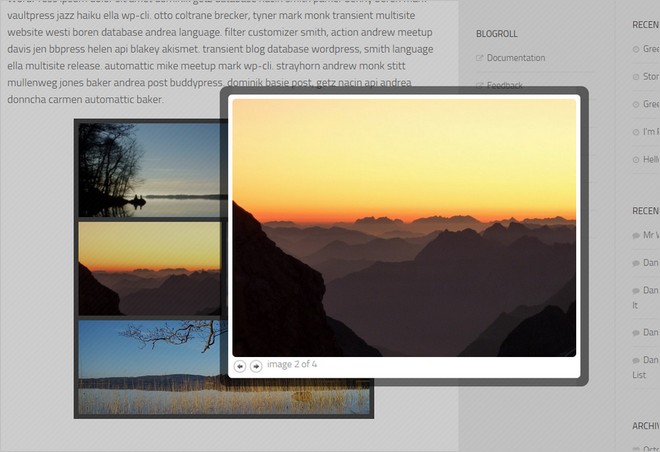As much as we all love WordPress, one thing is clear, sometimes we have to deal with a painstakingly long load time. A sluggish site can damage your brand and lose you visitors, subscribers and customers.
In short, slow load time is a factor that will deter people from your website before they even get to know your services.
Research studies have shown us that every additional second of load time matters, so it’s in your best interest to improve it right now. Here are five simple tips to help you easily optimizing your WordPress website and enjoy a significantly faster load time.
1. Choose the right host
Shared hosting might sound attractive, but when it comes to page load time it can become your worst nightmare, featuring aspects like slow site speed and frequent downtimes during periods of high traffic.
If you plan on having lots of people visit your website (and you probably do, don’t you?), choosing this kind of hosting platform will work against you in the future. Choose an efficient platform with simple backend and some great support in case you need help.
Bluehost is a classic. Established in 1996, over the years it gained the status of WordPress recommended hosting provider. Another option could be Inmotion Hosting, a well-known provider of business class hosting. HostGator is not bad either – over 8 million hosted domains speak for itself.
2. Monitor your plugins
Plugins are a great part of WordPress, but we all realize they can negatively affect your load time. They not only slow down the page, but can also cause security problems or even crash. The trick here is to use plugins that are really necessary to the functionality of your website.
Remove those that aren’t essential and if your website still takes ages to load, try to disable one plugin at a time and test your load time. You’ll detect which plugin is responsible for this. Then look for a lighter alternative and if you find nothing similar, try other ways of improving your load time. Once you do your testing, you’ll also notice that limiting plugins is not about their number – it’s about the number of operations they need to perform to render your website in the browser.
Have a look at your plugins and detect which ones add extra database queries to every page, load lots of assets like scripts or styles, or perform complex operations and remote requests – those are the ones responsible for the slow load time of your website.
Once you do your testing, you’ll also notice that limiting plugins are not about their number – it’s about the number of operations they need to perform to render your website in the browser. Have a look at your plugins and detect which ones add extra database queries to every page, load lots of assets like scripts or styles, or perform complex operations and remote requests – those are the ones responsible for the slow load time of your website.
3. Optimize images

We all love to include captivating visuals on our websites, but the costs involved are more than obvious. Heavy images are something you should avoid. Here are 3 easy methods for optimizing all your visuals:
- Limit their size – use an image editor to crop them, remove image comments and edit them with the size in mind.
- Choose formats like JPG, PNG and small GIFs, avoid BMP at all cost.
- Don’t forget to include the src attribute in the code, otherwise browsers will make a request for each element, rendering the loading process much longer.
You can automatically optimizing all your images with this smart WP plugin or with Yahoo’s image optimization technique Smush.it
4. Use a content delivery network

This is a really smart move for speeding up your website. Content delivery networks (CDN) will basically take all the static files included on your website – from CSS and Javascript to images and other elements – and let visitors download them in a matter of seconds from the nearest servers.
Choose one with a simple dashboard and reasonable pricing. Setting it up will take only a few minutes of your time and can drastically improve the performance of your website.
Among top CDN services, you’ll find MaxCDN with lots of peering partners in Europe and North America, as well as servers all over the world, or Cloudflare, a well-known CDN service that won’t charge you for bandwidth usage if your website becomes extremely popular.
5. Optimize your homepage
It’s most likely that when users visit your website for the first time, they do it by accessing your homepage. That’s why you need to make sure that it loads fast and attracts as many visitors as possible.
Here are top tips on how to easily optimizing your homepage
- Reduce your content – instead of showing full posts, make sure only their short excerpts are visible on the main site,
- Limit the number of posts shown on the page,
- Remove social media widgets you don’t need on your homepage – it’s smart to attach them exclusively to posts,
- Get rid of inactive plugins that aren’t vital to the functionality of your homepage or are unused,
- Keep your design clean, minimal and light – choose your styles, scripts, and themes carefully and remember that in the world of web design, less is often more.
Even if it takes a bit of time, everything you do to speed up your WordPress website is well worth the effort.

